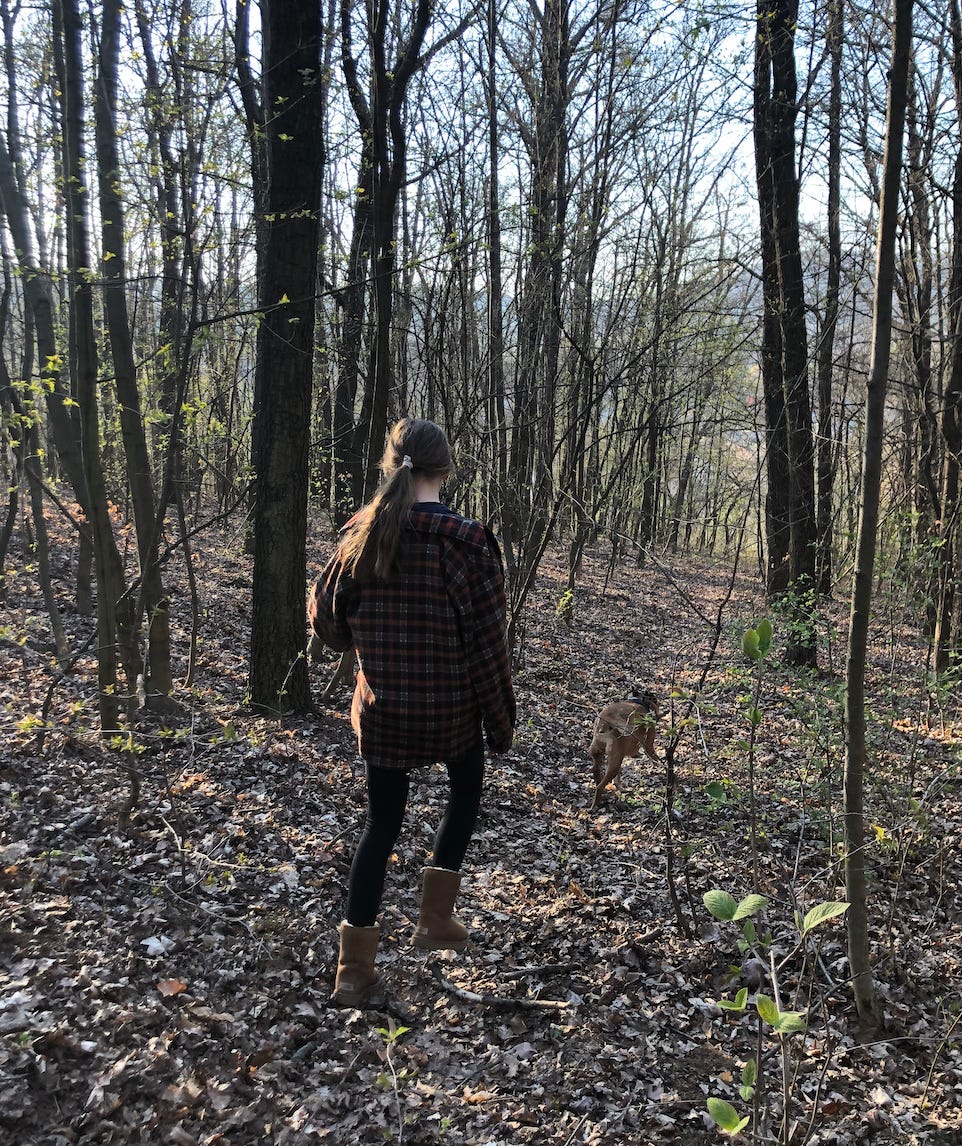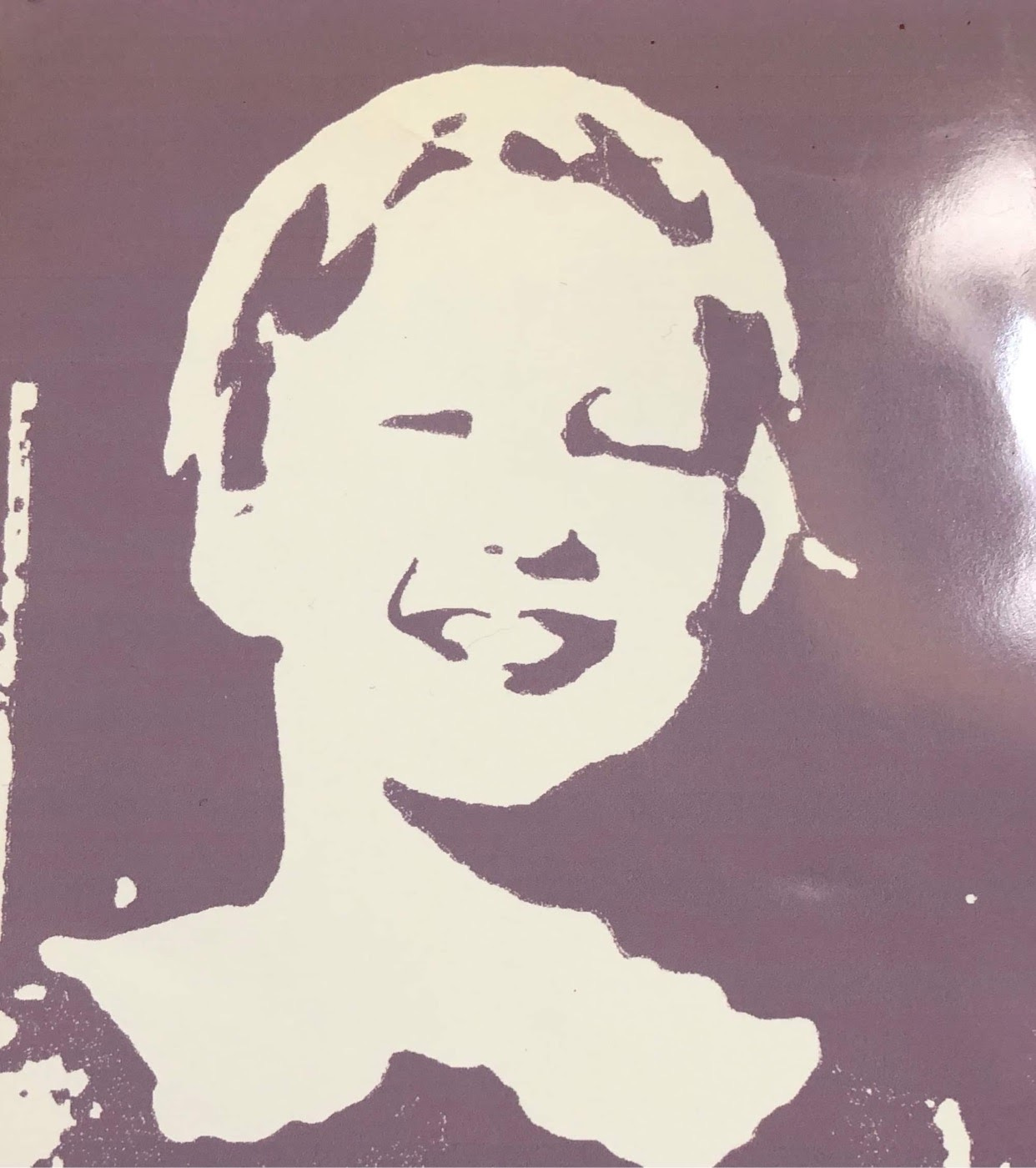"Introduction" & "Waiting Under The Tree"
Welcome to my first ever issue from Ordinary With Extraordinary!
My Introduction
Dearest Readers,
Welcome to Ordinary With Extraordinary. I thank you from the bottom of my heart for contributing to this new path I am taking. My name is Ruby Gardner. I am 13 years old and am writing to you from a small village in Hungary. This project is the beginning of my writing career and the continuation of my activism. I am delighted to interview and write about people's journeys to activism. We will learn what drew them to their cause and what avenues they use to further their cause. Join me in this journey. I hope it will inspire you to share your change-making story with me or, even better, begin a journey of activism of your own.
The pandemic has brought so much frustration and tragedy to the world, but also light. We are connected more than ever in a weird sort of way. During this time, I have put myself out into the world to become a part of the change for the world's good. Now, there are so many more inclusive opportunities because of our online platforms.
In the Fall of 2020, my French teacher suggested an opportunity to join an online course from an organization titled The Youth Social Change Fellowship. The founder is a university student, from Brown, with a passion for change-making. After taking their course, I was asked to join their team. They invited me to facilitate a five-day online workshop for an international school in Myanmar. These rich experiences would have never occurred without the help of isolation, forcing me to take a step back from this twirling, busy world and reevaluate what I am passionate about. From these classes and experiences, I began to think about a particular project. I learned that not everyone needs to reach Greta Thunberg's notoriety in order to make a change. Many ordinary people near to me have contributed to making a difference in extraordinary ways. I believe their stories and the ways in which they used their talents and skills can become an example to us all on everyday activism.
I am committed to fighting for equal humanity and to help raise a sustainable future for our planet by teaching others that WE can make a difference. One of the first people I interviewed was my grandmother, Momo, also known as Monika Lidman. I was so excited to hear her stories of her being an activist and can't wait to share them with you in a future writing piece. My grandmother is also a writer, and she shared a fascinating story about my great grandmother with me. I realized that activism has run through my blood for more than 80 years in reading this story. A Buddhist saying states, "if you look deeply into the palm of your hand, you will see your parents and all generations of your ancestors. All of them are alive at this moment. Each of them are in your body. You are the continuation of each of these people." This saying is reminiscent of all of the stories that make me who I am because my story is also their story. This piece, written by my grandmother, is too powerful not to share with my introduction. She has permitted me to share this story embodying an activist. My great grandmother, from Sweden, began advocating when she was very young. As you will learn from the story below, my great grandmother used her patience and persistence coupled with kindness to advocate for herself. Patience, persistence, and compassion play a vital role in activism.
---
“Waiting Under The Tree” Written by my grandmother, Monika Lidman.
Cause: Her Education
Avenues Used: Passive resistance
Methods used: Patience, Persistence and Kindness
The young schoolteacher grew quite puzzled. During late winter, her muddied clogs had been mysteriously cleaned and neatly placed on newspaper, just inside the school door. A solitary crocus blossom graced the presentation. She wondered who her admirer could possibly be...
The year was 1939. Europe was on the brink of full war. This schoolteacher’s first assignment had taken her far from her home, where the refined, well-dressed folks spoke “proper” Swedish. Immediately upon arrival, she developed serious misgivings about her mission to teach art in a Nordic town. The weather and people seemed rough; they spoke a strange dialect, and health perils abounded.
When she thought of her students, she wondered how many of them would even complete their education. Many of these children of loggers, farmers and fishermen would be called back to the forest, land and sea - for the survival of their struggling families. Others would fall prey to tuberculosis, which claimed such high numbers of victims in northern latitudes. The teacher questioned her impact on the children’s lives. Just what was she doing in this remote location with her art books, her loom and her fine paint brushes?
At the end of each school day, when dusk came at two o’clock, the teacher mounted her bicycle and began her icy ride toward town. For some days, she had noticed a girl under a tree, right beside the road. The teacher did not know this child, who offered a smile and a wave with each daily passing.
Growing curiosity made the teacher ease her bicycle off the road and greet the round-faced child. The girl curtsied and, with all of the courage she could muster, asked if she could please join the art class. The teacher responded as kindly as she could, saying that the class was filled. Heading homeward, she could not quite shake the image of those earnest, blue eyes. It played on her.
A bit of school research revealed that the girl was from a tragic household, dealing with tuberculosis and more. In itself, this spelled an uncertain future for the girl’s education. The teacher considered this. Yes, it seemed most prudent to direct the girl’s remaining time in school toward more practical, home management courses. Still...
In spite of the teacher’s disappointing words, the wide-eyed girl continued to wait under the tree. It was difficult for the teacher to pass without averting her eyes from the young girl’s sweet smile and slow wave. Those muddied clogs continued to show up, cleaned and neatly placed.
Finally, the teacher could not bear to pass the girl. She stopped her bike, acknowledged the girl’s persistence and asked about the muddied clogs, made clean. The teacher invited the girl to join her class. Flush-faced, the girl could hardly contain her excitement. She gave a happy little shriek and took off in the twilight, running homeward.
The art classroom became much more than the girl’s respite from the challenges at home. The teacher also experienced new joy; watching as the girl revelled in the fertile environment. The classroom took on an appreciable shine; full of sunlight and music, prints of master paintings, balls of colored yarn, and sometimes, even a bowl with fresh flowers to draw.
Years passed. WWII raged across Europe. The girl’s mother died from tuberculosis and she was, indeed, called away from completion of her studies to manage home and four siblings. The teacher tried to mask the pain she felt, upon their parting. She gave the girl-turned-young-woman a rare hug - and a small sachet as a gift. Neither the girl, nor the teacher - would ever forget their unusual meeting, their goodbye, or the long-term impact of their time together, in that art classroom.
Those seeds planted in 1939 took many years to fully blossom. First, it seemed that the girl had to wrestle mightily to keep things afloat at home. Even as her demanding load grew more daunting, she grew more lovely. Then, quite unexpectedly, a young Swedish-American man, after his time of service, came to visit Sweden with his parents. Though quiet, he made a big impression on the teenaged girl. He was funny, gentle and kind. Once back home, he wrote, inviting her to visit America. She thought long and hard before deciding to leave. Later in America, she married him. Over the years, they welcomed three baby girls into a humble home with a bonus - culture. With an abundance of encouragement, the girls created freely and were urged to pursue each of their talents. Huge emphasis was placed on education and much appreciation was paid to teachers of all kinds.
When her daughters experienced obstacles and frustrations, their mother would retell her own story of waiting under the tree. It was the reiteration of this tale that reminded them that perseverance was everything.
I have often wondered what my life would have been like, had that patient and persistent girl not waited under the tree. What would I have become, if that one little female had lacked her determined spirit? Without that hopeful and tenacious child, I know that my life would have been quite different. I would never have known Vivaldi, Monet, or how to create such a rich and colorful life - in arts education. Lucky, lucky me. The girl under the tree was my mother.
Thank you, Ulla Nystrom Lidman
1928-2012




Beautiful!
This is amazing Ruby!! It is so inspiring that you are doing this. I miss you <3